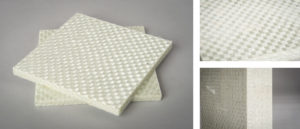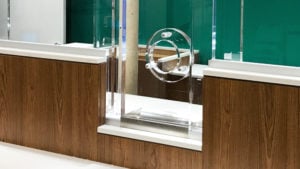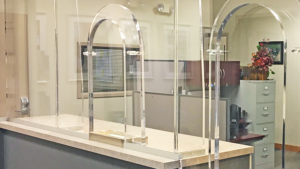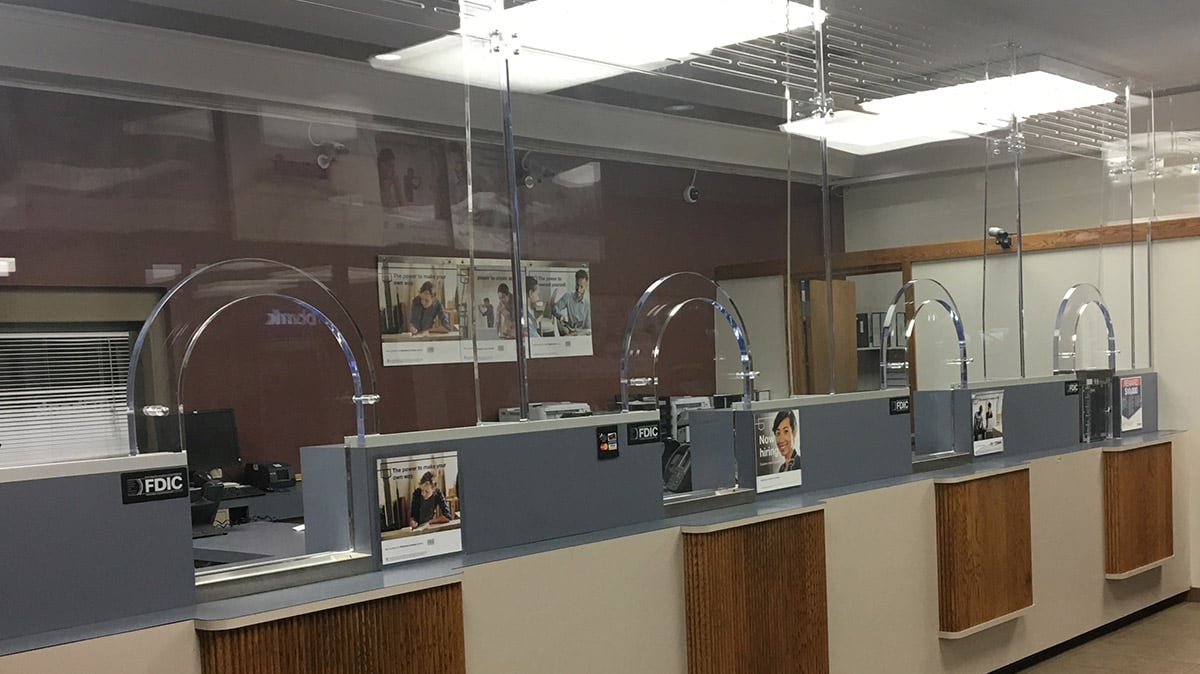All too often, in the pursuit of safety, we see physical security in banks that goes too far. It isn’t that the security measures are invasive, just that they’re literally “over the top.” The bank has spent a respectable chunk of money for little or no real improvement in safety or security. Meanwhile, there’s a single feature that has very little impact on the total cost of a security barrier but has a huge positive impact on bank workers and customers.
“I see stuff sometimes,” Jim Richards says, “and I just don’t get it.”
Jim is the CEO of Total Security Solutions, the nation’s leading producer of custom ballistic security solutions. He has decades of experience designing, engineering, fabricating, and installing comprehensive ballistic security barriers. If he can’t make sense of a bank’s security decisions, then it’s likely they simply do not make business sense.
Overrated: “Full Coverage” Floor-To-Ceiling Acrylic
This is extremely common: Banks will install bullet-resistant acrylic stretching all the way from the countertops to the ceiling tiles.
“Putting eight feet of bullet-resistant glass on top of counters,” Jim says, “That’s totally unnecessary.”
Why? Because bank robbers are not acrobats.
Jim explains: “Let’s say you’ve got 36-inch or 40-inch counters. If you put four feet of bullet-resistant acrylic on top of that, you’ve gone up seven and a half feet total. Even if you leave the last three feet totally open at the top, no one is getting over that. If you do want to fully enclose the teller station, a non-rated half-inch acrylic louver on top is fine. It won’t stop a bullet, but what are you protecting up there? Ceiling tiles?”
In terms of expense, running bullet-resistant acrylic all the way to the ceiling is no small matter. It can easily add $7,000 to $15,000 to the cost of your security barrier. That can be a full third of the total cost for the acrylic for that project. That added expense is buying no additional security.
And the added expenses don’t stop with the acrylic. This sort of “full coverage” design adds at least 400 to 900 pounds to the total weight of the transparency. In order to accommodate that, you’ll likely need different fasteners, a beefier channel, and possibly extra blocking in walls and counters. That in turn is going to increase labor costs, transportation costs, and potentially lengthen the time needed to complete the install.
“All in all, that’s a pretty hefty investment to protect the safety of your light fixtures and drop ceiling.”
Overrated: “Full Coverage” Fiberglass
Jim also sees this sort of over-the-top “full coverage” approach with bullet-resistant fiberglass. Fiberglass is an important element of physical security in banks. Without a layer of fiberglass panel, bank counters have no hope of stopping a bullet.
That said, it isn’t as though every inch of wall and counter needs to be protected.
“You need to think about what you’re really protecting,” Jim says. “Too often we see people who’ve spent an awful lot of money to get ‘full coverage.’” This means covering the entire front of the counter with bulletproof fiberglass panels, and then laminating that armor layer with a wood veneer to match the existing fixtures and decor.

bullet-resistant fiberglass is vital to physical security in banks
This is a lot of work and a lot of additional expense. But when you walk around the counter and really look at what you’re shielding, you discover that two-thirds of that opaque armor is protecting drawers and files and wire runs.
The right approach is to protect the people, not the counter. When TSS does a bank counter, they prefer to line the insides of the countertop risers and kick spaces with bullet-resistant material, providing the teller with a bullet-capturing shield. This approach takes a little more thought and planning—and requires a bulletproof company with some skill at fabrication—but it’s a better solution overall.
Underrated: Clear Communication and Physical Security in Banks
There’s a tendency to treat the ballistic window and teller station design as a purely visual choice. This is a mistake. Most of a bank customer’s experience isn’t visual; it is about communication. People get frustrated very quickly when they must struggle to be understood. The more effortlessly a customer can communicate with a teller, the higher they rate their experience.
The COVID pandemic, having necessitated mask-wearing in so many public settings, has made this all the more important. Between the acrylic barrier and mask-muffled voices, even a simple transaction can be exhausting.
“I see people go with a traditional hole-and-backer design with their windows sometimes,” Jim says, “I think that decision comes back to cost. They see that one style of window costs a little less, so why not save a few bucks?”

a “hole-and-backer”-style teller window
Hole-and-backer is an older communication solution, invented when the industry was in its infancy and had fewer methods for fabricating barriers. It’s still a very good solution in some settings, but it inherently does a poorer job at transmitting sound.

a custom “arch”-style bulletproof teller window
“An arch or baffle window is going to perform much better in a wider range of settings. You get really good voice transmission around an arch or baffle. Especially the baffle, which we designed to make speech as clear and easy as possible. It’s worth it to trade a little additional cost now for a much better worker and customer experience going forward.”
When it’s all said and done, most banks and financial institutions should consider a bulletproof security system at some point. Our team at Total Security Solutions has over 30 years of experience in the industry and can be a trusted partner in finding what works best for your environment.


